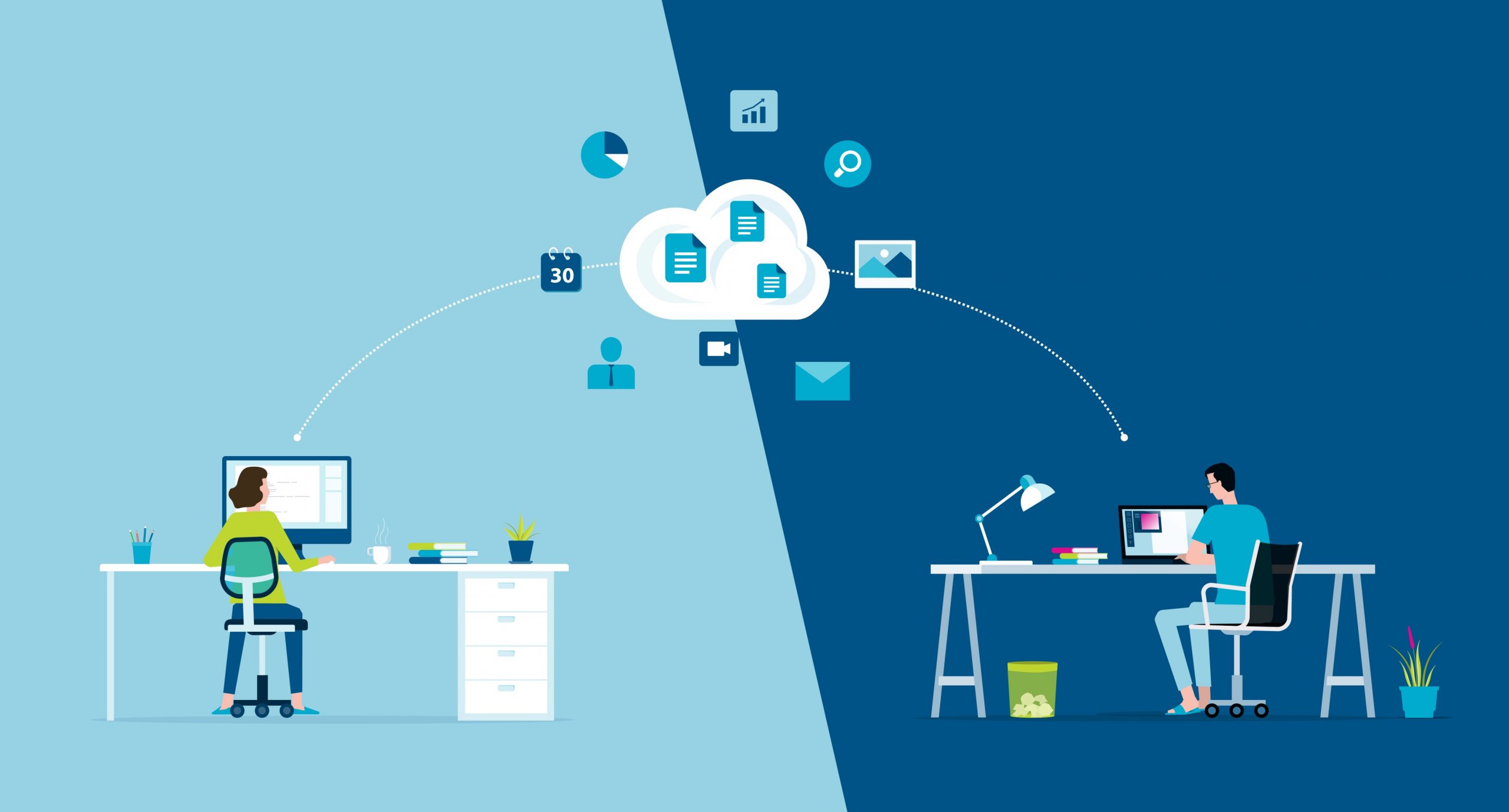Subscribe
Subscribe to EduBridge Blogs
Businesses are retooling offices to attract and retain top personnel while developing the office of the future, from “Zoom rooms” to the metaverse to desk sign-up sheets. The future of office space has clearly changed as a result of the pandemic. But how are businesses leveraging technology to create a new office future?
If you’ve returned to the office in recent months, you may have noticed that the corporate environment has changed slightly. The days of open floor plans and rows of desks are long gone. As the global skills shortage worsens, CEOs are turning to their corporate office space in a novel approach to recruiting and retaining top personnel.
The future office, which many workers will visit in the post-pandemic future, may have Zoom rooms, desk sign-up sheets, and health-focused accents. Some office workers may even choose to work in the metaverse rather than in a traditional office. One thing is becoming increasingly clear: the office’s future is shifting, and organizations are radically redefining the concept of corporate office space.
Creating workplaces that are centered on human health
Employees want operable windows in a post-Covid world with heightened health concerns. In a same vein, even before the pandemic, workers demanded easily operable shades.
What does this imply? Better hand washing stations, more hand sanitizer, and a general emphasis on keeping spaces clean and neat. There’s a strong case to be made for spending more time in natural light and open spaces, thus employees may require control over windows, blinds, and other devices that allow them to regulate their surroundings.
Speaking of systems, new office designs will evolve in ways that the average person will not notice. Highly sensitive MERV 15 filters (An air filter’s minimum efficiency reporting value (MERV) rating measures how effectively the filter stops dust and other contaminants from passing through the filter and into the air stream. Filters with higher MERV ratings trap small particles more effectively than filters with lower MERV ratings), higher minimum relative humidity, bipolar ionization, and germicidal UV lighting systems will all be used.
Building materials may also be considered. Employers can explore replacing concrete with high-performance natural construction materials such as cross-laminated lumber to create a more welcoming office that is also environmentally friendly in the long run.

Desk booking software and “hot desk” configurations
Employees will sign up for workstations as needed in the future office, much as they have long reserved conference rooms. The method for this will, of course, be a simple app where employees can use the apps to book seats in the chosen co-workign space.
Desk booking software is already a popular element in many organizations as they attempt to handle flexible working in the midst of a pandemic.
Another trend: “Hot bunks,” an old military word for submariners sleeping in shifts, are developing into hot workstations, which are temporarily held by individuals who sign up for them. The architectural ramifications of this are that without desks and cubicles, workers will need lockable spaces for their personal items and gear. To address this need, architects are finding space for small lockers.
Alternative locations
Experts predict changes even before building construction begins, as employees express their priorities in novel ways. For example, today’s emphasis in sustainability, combined with a desire to cut travel time (and the resources consumed within), may lead businesses to reuse old or underutilized structures in workers’ suburbs. Consider a deserted big-box shop that has been converted for corporate purposes. Alternatively, an unproductive mall might be turned into a hive of business centres.

Introduction of Remote and Hybrid Working Model
The COVID-19 pandemic has caused many businesses to reevaluate their office space needs. For some companies, the move to remote work has been successful, and they have decided to downsize or eliminate their physical office space altogether. Other businesses have found that a hybrid model, with some employees working remotely and others coming into the office for part of the week, is the best way to maintain productivity and company culture. Whatever the future of office space looks like, it is clear that the pandemic has accelerated the trend toward more flexible working arrangements.
Reduced Physical Office Footprint
As firms transition to smaller, more efficient workspaces, the physical office footprint will reduce. Offices will be more adaptable as well, with open floor patterns that can be quickly modified to meet changing needs. Furniture will be more comfortable and ergonomic, and a greater emphasis will be placed on creating a healthy work environment. Moreover, workplaces will be more connected to the outside world, with wide windows and balconies providing staff with fresh air and natural light.
Maximising On a Talent Pool While Operating Remotely
Office spaces are constantly evolving to meet the changing needs of businesses and employees. In the past, the traditional office space was designed to promote collaboration and face-to-face interaction. However, with the rise of remote work, more and more businesses are rethinking the way they use office space. The office space of the future will likely be more flexible, with a focus on promoting wellness and providing a variety of collaboration spaces. Along with that in house workforce will be reduced to maintain a quality output at work by employing specialized agencies for completion of certain tasks. As businesses become more global, office spaces will need to be designed to maximize on a talent pool while still fostering a sense of community. Additionally, applications recording log-in and log-out time will be a huge hit especially for employees working remotely.
Office spaces are constantly evolving to meet the changing needs of businesses and employees. In the past, the traditional office space was designed to promote collaboration and face-to-face interaction. However, with the rise of remote work, more and more businesses are rethinking the way they use office space. The office space of the future will likely be more flexible, with a focus on promoting wellness and providing a variety of collaboration spaces. Along with that in house workforce will be reduced to maintain a quality output at work by employing specialized agencies for completion of certain tasks. As businesses become more global, office spaces will need to be designed to maximize on a talent pool while still fostering a sense of community. Additionally, applications recording log-in and log-out time will be a huge hit especially for employees working remotely.
Recent Blogs
Related Blogs
Accelerate Your Career with Expert Guidance and Guaranteed Job*!
"*" indicates required fields


